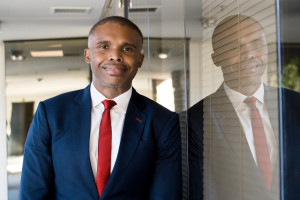The human body is designed to be self-sufficient, which means it contains the resources necessary to rebuild, repair, and regenerate itself. Unfortunately, these resources can weaken or diminish with time, or musculoskeletal damage can overwhelm this regenerative system. Luckily, we’ve discovered new ways of tapping into these healing resources and redirecting them through platelet-rich plasma (PRP) therapy.
At Camelback Spine Care, our patients come to see Dr. Harvinder Bedi and our team for any number of joint, neck, and back problems, and we pride ourselves on offering the latest evidence-based treatments. As part of our wide range of services, we offer PRP therapy, which can help your tissues heal more quickly.
Here’s a quick look at how PRP therapy works and whether it’s safe.
The power of platelets
Your platelets are found in your blood, and they’re mainly responsible for clotting. When you injure yourself, your platelets work quickly to plug up any holes in your blood vessels to prevent you from bleeding out.
But their job doesn’t end there. With the threat of bleeding taken care of, your platelets then release growth factors and other special proteins that go to work to create an optimal healing environment.Â
Some of the more beneficial responders to a concentration of platelets are your body’s own stem cells. When they arrive, these undifferentiated cells become whatever type of cell is needed for rebuilding and then multiply as that kind of cell.
With PRP therapy, we create a concentrate of platelets and direct them into your damaged tissue. By increasing the healing resources in a certain area, our goal is to encourage faster rebuilding and repairs. This technique is also extremely useful in dealing with soft tissues that don’t enjoy a free flow of resources, such as your cartilage.Â
Tapping your platelets
The process for collecting your platelets is quite easy — we simply draw a sample of your blood. We place this sample into a centrifuge, which separates out the platelets. From there, we mix the concentrate of platelets back in with a small amount of your plasma and inject the compound into your treatment areas.
Is PRP safe?
Now, let’s get to the question we pose in the title of this blog — Is PRP therapy safe? Since PRP is autologous, which means it comes from your own body, the therapy is widely considered to be quite safe. In fact, your body should readily accept the PRP and respond accordingly.
You may experience some soreness, redness, or swelling at the injections sites, but these side effects are generally short-lived.Â
The bottom line is that there are far more rewards than risks with PRP therapy. If you’d like to see whether PRP therapy can play a role in resolving your musculoskeletal health issues, contact our office in Sun City, Arizona, to set up a consultation. Just call us or use the tool to book online right now.Â

.jpg)
.jpg)



